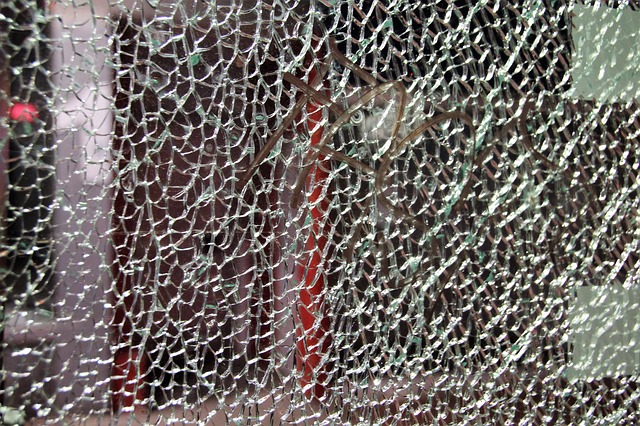Safety glass
The term safety glass refers to a range of glass types that have been strengthened or reinforced to make them less susceptible to breakage or shattering and to make them safer when they are broken. Safety glass should not splinter into large shards when broken.
Types of safety glass include:
- Toughened glass which has been tempered. When smashed it shatters into small, rounded pieces. Tempered glass is annealed glass that has been retreated in a heating and rapid cooling process to make it harder and stronger. As a result, it is four times stronger than annealed glass but also more expensive. For more information see: Tempered glass.
- Laminated glass. Comprises plastic interlayers sandwiched by sheets of glass. When struck, it may crack, but the glass is held in place by the plastic.
- Reinforced glass such as wired glass. Glass reinforced with a wire mesh. When struck, the glass cracks but does not shatter. It can also be fire resistant.
In buildings, safety glass may be used to withstand objects that might impact the glass, or to remain safe if it is broken when impacted. It is typically used for large glazed areas and wherever glass is required in a position that makes it vulnerable to being struck by objects or people, and where the result could be serious injury or damage. A typical application is low-level glass which could be impacted by children, but also glazed doors and shower screens, glass balustrades, glass walls etc.
Part N of the Approved Documents to the Building Regulations deals with the requirements for safety glass. It requires safety glass to satisfy one of the following conditions:
- Where people moving in or about the building are likely to come into contact or impact the glass.
- If broken on impact, the glass should break in a way which is unlikely to cause injury.
- Resist impact without breaking.
- Be shielded or protected from impact.
In non-domestic applications, where glazing is transparent, it should incorporate features e.g markings, transfers etc, which make it apparent to people who are likely to impact it when moving in or about the building (manifestation).
See also: Security glazing.
[edit] Related articles on Designing Buildings Wiki
Featured articles and news
Infrastructure that connect the physical and digital domains.
Harnessing robotics and AI in challenging environments
The key to nuclear decommissioning and fusion engineering.
BSRIA announces Lisa Ashworth as new CEO
Tasked with furthering BSRIA’s impressive growth ambitions.
Public buildings get half a million energy efficiency boost
£557 million to switch to cleaner heating and save on energy.
CIOB launches pre-election manifesto
Outlining potential future policies for the next government.
Grenfell Tower Inquiry announcement
Phase 2 hearings come to a close and the final report due in September.
Progress from Parts L, F and O: A whitepaper, one year on.
A replicated study to understand the opinion of practitioners.
ECA announces new president 2024
Electrical engineer and business leader Stuart Smith.
A distinct type of countryside that should be celebrated.
Should Part O be extended to existing buildings?
EAC brands heatwave adaptation a missed opportunity.
Definition of Statutory in workplace and facilities management
Established by IWFM, BESA, CIBSE and BSRIA.
Tackling the transition from traditional heating systems
59% lack the necessary information and confidence to switch.
The general election and the construction industry
As PM, Rishi Sunak announces July 4 date for an election.
Eco apprenticeships continue help grow green workforce
A year after being recognised at the King's coronation.
Permitted development rights for agricultural buildings
The changes coming into effect as of May 21, 2024.






















